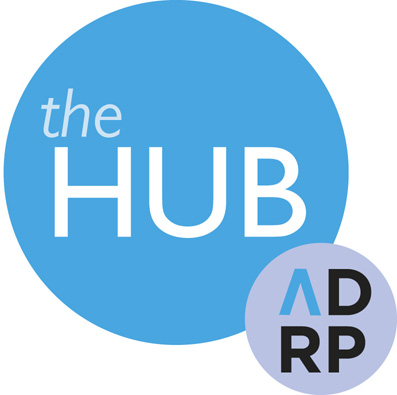 Advancing Philanthropy through Donor Relations and Stewardship Advancing Philanthropy through Donor Relations and Stewardship
Julia Emlen
Executive Editor
The Journal of Donor Relations and Stewardship
Every nonprofit organization wants to celebrate those who support its mission with their time, talent and treasure. Some donors embrace publicity for their giving while others wish to remain less conspicuous. For those who seek the limelight, donor lists, testimonials and personal interviews, recognition events, stories on the Internet and on paper and videotape are among the armamentarium available to organizations to showcase philanthropists and, incidentally, engage prospects.
Philanthropists have the resources and the desire to make a difference and nonprofit organizations have the mission and access to beneficiaries to demonstrate to donors that giving makes a difference. It seems like an ideal opportunity for the corporation and the individual to join forces. What could go wrong? What makes everything go right?
Negotiations to secure and endorse philanthropy are best managed against the backdrop of a program of donor relations and stewardship that presents an organization as a trustworthy target for philanthropy, manages a system that assures the interpretation of priorities into workable agreements and provides feedback on the progress of the organization in advancing its mission. In the forefront of donor relations and stewardship are the specific acts of compliance management, recognition and engagement. Excellence in these arenas—the preparatory and the celebratory—is critical to promoting the relationship between the philanthropist and the organization and engaging others to consider making any particular institution the target of their own largess.
Donor relations and stewardship activities may help position philanthropists to appreciate the importance of their generosity. Furthermore, donor relations and stewardship can assist organized nonprofit institutions to present the case for philanthropy. Many organizations, however, do not easily, adequately or strategically exploit their donor relations and stewardship resources to attract and sustain the philanthropic intentions of their prospects and donors. What gets in the way?
Nonprofit enterprises that practice donor relations and stewardship may be exceptionally vulnerable to the necessity to prepare for and respond to philanthropists, but also in a position to lead the effort to maximize efficient and effective philanthropy management. On the one hand, because donor relations and stewardship practitioners are charged with sustaining the giving relationships that are the lifeblood of the nonprofit industry, they recognize the need to adjust to new demands for philanthropy, the shifting world of philanthropists and the variables at play between these polarities. On the other hand, because much of their work is based on so-called best practices, these practitioners may be in a privileged position to identify and revise or abandon ineffective activities. In all circumstances, innovation can be an attractive foundation for the donor relations and stewardship business model.
Philanthropy workers have charted new ways out of these woods in recent years, in particular through the Association of Donor Relations Professionals (ADRP), which has provided a platform for sharing ideas and learning how to evaluate the outcome of their work. The organization has helped stewardship and donor relations practitioners by identifying four areas of expertise, as follows:
- Compliance management: assuring that a gift is codified in the gift agreement and more likely to be used as intended by a donor
- Acknowledgment: expressing the organization’s appreciation, usually through a significant leader, for the donor’s philanthropy
- Recognition: attaching a donor’s name to the outcome of philanthropy, such as a naming opportunity or through media
- Engagement: enhancing the connection of a donor with the organization through events, visits or other person-to-person activities that enhance the dimension of recognition with interpersonal contact
It is no surprise that compliance management is first on the list. This gift-based element of stewardship and donor relations, which is exemplified in the gift agreement, sets the stage for the other elements and the celebration of the donors. Compliance management means that the donor and the organization’s representatives have a solid understanding of the nature of the gift and its designation—the donor’s intentions—in relation to the priorities of the organization and its capacity and ability to meet the donor’s expectations. Donors are inspired, praiseworthy and perhaps transformed in their philanthropy when the institutions they support are organized to make no mistakes, to never interpret but to understand clearly their donors’ expectations as outlined in a gift agreement that steers compliance management.
Here are a few rules for preparing gift agreements that can ease compliance and attendant celebrations:
- Develop a template that can be used across gift types and purposes, that is simple to understand and use
- Base gift agreements on accepted, current fundraising priorities
- Contextualize gift designations and special requests against the possibility of organizational change
- Refrain from specific gift reporting or donor recognition in the gift agreement, referring to current practices rather than special activities or considerations
Whatever the circumstances, the process of celebration begins well before the ink on the gift agreement is dry, but celebration is best savored when all parties clearly understand the nature of the philanthropic relationship. Philanthropists and leaders in nonprofit organizations meet at the juncture of impact and trust. Philanthropists want to know that they can make a difference in the world by supporting institutions with missions directed at promoting the common good. Those in the nonprofit sector are most successful at raising the funds they need to advance their missions when they move philanthropists beyond transactional giving to transformational investment in an organization. In all cases, celebration begins with the gift agreement and gift agreement begins with mission, strategy and priorities.
Reading List
CASE: Gift Agreements and Donor Intent, https://www.case.org/Browse_by_Professional_Interest/Advancement_Services/Donor_Relations_and_Stewardship/Gift_Agreements_and_Donor_Intent.html
David Wheeler Newman, Effective Gift Acceptance Policies and Procedures, https://www.pppla.org/assets/media/wrpgc/2013/newman%20david%20ho%20.pdf
Barbara Rhomberg, Gift Acceptance Policies: Why, When, What, How and Who. http://www.ncpgcouncil.org/uploads/5/3/7/2/53729933/2012-01-12_primer_handout_rhomberg.pdf
Philanthropy Works. Gift Agreements. https://www.philanthropyworks.org/gift-planning-field-guide/gift-administration/gift-agreement-landing-page/gift-agreements-major-gift

Back to the September 2018 Hub
|